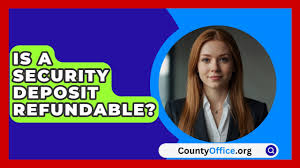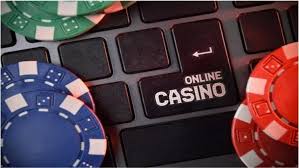ToffeeShare stands out as a refreshing exception. It’s not just another file-sharing service—it’s a peer-to-peer platform that values both security and simplicity. Whether you’re a tech-savvy developer, a digital nomad, or an everyday user trying to send large media files, ToffeeShare offers a practical solution with a unique approach.
Unlike traditional cloud-based storage services that temporarily store your data on servers, ToffeeShare bypasses the cloud entirely, leveraging your browser and internet connection for direct file transfers. This means no server storage, no registration, and absolutely no file size limits.
Peer-to-Peer File Sharing at Its Core
At the heart of ToffeeShare lies peer-to-peer (P2P) technology, a communication model where two devices connect directly without routing through a central server. When you use ToffeeShare, the files don’t get uploaded to any intermediary server; instead, they stream directly from sender to receiver.
This direct exchange minimizes exposure to third parties. Since nothing is stored, there’s no archive of your files lying around for anyone to intercept later. You retain full control from start to finish.
Unlike centralized platforms that could face server downtime, bandwidth restrictions, or surveillance risks, peer-to-peer file sharing removes those dependencies.
How the Transfer Process Works
ToffeeShare operates in real time. Once you upload a file on your end, the system generates a unique, temporary link. That link connects the sender’s browser directly to the recipient’s browser. As soon as the recipient clicks on the link, the file transfer begins immediately.
The connection must remain active on both ends throughout the transfer. If either party loses connection, the transfer halts—because there’s no middle storage to resume from. That’s the nature of direct file sharing, and it reinforces the privacy-first model.
End-to-End Encryption Built In
One of ToffeeShare’s standout features is its use of end-to-end encryption (E2EE). From the moment you start sending the file until it arrives at the destination, the content remains encrypted. No one—including ToffeeShare itself—can see the file contents during the exchange.
ToffeeShare uses WebRTC (Web Real-Time Communication) as its underlying protocol. This browser-supported standard facilitates secure, low-latency communication. WebRTC encrypts data using DTLS (Datagram Transport Layer Security) and SRTP (Secure Real-time Transport Protocol).
What does this mean for the average user? It means your files stay yours—confidential, untraceable, and protected from any third-party interference.
File Size Limits Don’t Exist
Most online sharing tools limit users to a certain file size unless they upgrade to a paid tier. With ToffeeShare, there are no file size restrictions. The only constraint is your device’s memory and your internet bandwidth.
You could send a 20GB video file or an entire folder of high-resolution images, provided both sender and receiver stay online until the transfer completes. It’s this flexibility that makes ToffeeShare ideal for large-scale creative work, game files, software builds, and more.
This unrestricted approach places it ahead of services like WeTransfer, Google Drive, or Dropbox, which cap their free usage and often require registration.
No Registration, No Tracking
Most platforms want something from you—your email, your phone number, or access to your files. ToffeeShare demands none of it. You visit the site, select the file, share the link, and that’s it.
This aligns with the platform’s privacy-first philosophy. There’s no user account to monitor, no database to store your transfer history, and no tracking cookies monitoring your activity across the web.
Cross-Platform Compatibility
ToffeeShare is browser-based, which means it works across a wide range of platforms:
- Windows
- macOS
- Linux
- Android (using desktop mode in browsers)
- iOS (with some browser compatibility)
As long as your device supports WebRTC-compatible browsers like Chrome, Firefox, Edge, or Safari, you can initiate or receive transfers.
Use Cases for ToffeeShare
While the tool may seem minimalistic, its practical applications span several industries and personal workflows:
Media and Content Creation
Video editors and graphic designers often work with massive files that can’t be emailed or shared over standard cloud drives without compressing or paying for storage. ToffeeShare helps move uncompressed, raw files without sacrificing quality.
Freelancers and Agencies
Quickly exchange assets or prototypes with clients without needing logins or shared drive access. The encrypted nature of the transfer is a bonus for those dealing with sensitive branding materials.
IT and Development
Share large codebases, ISO files, or development builds without hosting them on Git or FTP. Developers often appreciate the temporary nature and security features of ToffeeShare.
Education and Research
Professors or students collaborating on large datasets or recorded lectures can rely on the platform for fast, secure, one-time sharing—no accounts needed.
Personal Use
Transfer family videos, photo albums, or private documents between home and work computers, or with friends—knowing that nothing is stored anywhere.
Security and Privacy Philosophy
ToffeeShare’s creators made privacy the core principle, not a feature to be enabled. It’s designed in a way where it physically cannot access your data—because the data doesn’t pass through or stay on their servers.
There’s also no telemetry data collected. The moment your transfer ends, the connection is gone. No trace left.
This design philosophy appeals to privacy enthusiasts, journalists, and anyone wary of corporate surveillance or data breaches.
Pros and Cons of ToffeeShare
Let’s weigh the benefits and limitations for a more balanced perspective.
Advantages
- End-to-end encrypted transfers
- Unlimited file sizes
- No account or registration required
- No cloud storage; real-time exchange only
- Completely free to use
- Open-source foundation
Limitations
- Both devices must stay online during transfer
- No history or record of transfers
- Not ideal for delayed downloads or offline sharing
- Dependent on WebRTC-compatible browsers
- Some corporate networks may block peer-to-peer connections
While the drawbacks are real, they stem from the very features that make ToffeeShare secure. It trades convenience for security—and that’s a decision many users are happy to make.
Open Source Transparency
ToffeeShare embraces open-source development. Much of its code and architectural design are openly available for inspection. This approach builds trust and allows contributors to verify that there are no hidden data flows or malicious behaviors embedded in the service.
If you’re a developer or privacy researcher, you can dig into the project’s GitHub repositories and understand how it all works under the hood. Transparency is another layer of protection in the security model.
Conclusion
ToffeeShare isn’t trying to be everything—it just aims to do one thing exceptionally well: send files securely without storing them. Its peer-to-peer, encrypted, and ephemeral architecture makes it a favorite among privacy-conscious users and professionals who need reliable file sharing without complexity.
Whether you’re moving gigabytes of data or simply value your digital footprint, ToffeeShare delivers a modern solution with old-school respect for privacy. There are no strings attached, no bait-and-switch pricing models, and no hidden surveillance systems.







